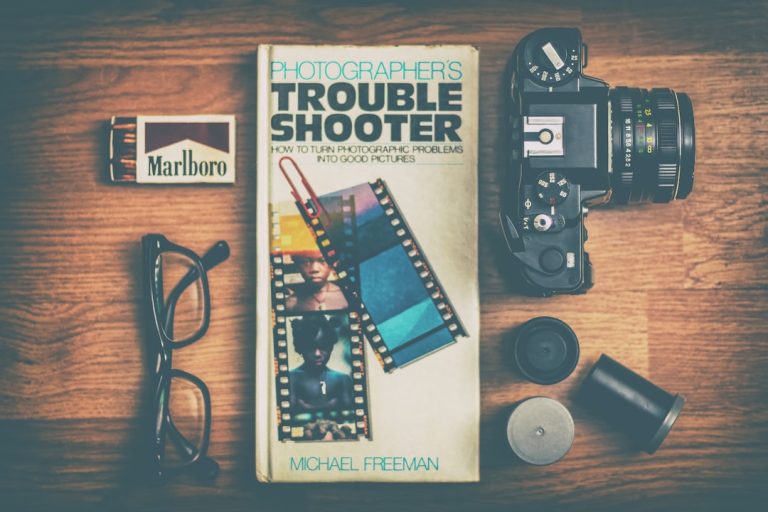
Books have long served as vessels of knowledge, imagination, and cultural expression, and the vast array of genres available today reflects the rich tapestry of human experience. Genres are categories that help readers navigate the literary landscape, providing a framework for understanding the themes, styles, and conventions that define different types of writing. From the fantastical realms of science fiction to the stark realities of memoirs, genres offer a way to categorize literature based on shared characteristics.
This classification not only aids readers in selecting books that resonate with their interests but also allows authors to target their writing to specific audiences, fostering a deeper connection between the text and its readers. The evolution of book genres has been influenced by historical, social, and technological changes. As societies evolve, so too do their storytelling methods and preferences.
The rise of digital media has further diversified the literary landscape, giving birth to new genres and subgenres that reflect contemporary issues and interests. In this article, we will explore various book genres, including fiction, non-fiction, children’s literature, and young adult works. We will also delve into the phenomenon of genre blending and subgenres, discuss how to choose the right genre for your reading preferences, and ultimately celebrate the diversity that genres bring to the world of literature.
Key Takeaways
- Book genres categorize literature into different types based on their content and style.
- Fiction genres include popular categories such as mystery, romance, science fiction, and fantasy.
- Non-fiction genres encompass biographies, self-help, history, and true crime, among others.
- Children’s genres cover picture books, chapter books, middle-grade fiction, and young children’s non-fiction.
- Young adult genres include dystopian, contemporary, paranormal, and romance, tailored for teenage readers.
- Genre blending and subgenres allow for unique combinations and specialized categories within broader genres.
- Choosing the right genre for you involves considering your interests, reading preferences, and the type of stories that resonate with you.
- Embracing diversity in book genres means exploring a wide range of literary styles and themes to broaden your reading experience.
Fiction Genres
Fiction genres encompass a wide range of storytelling styles that transport readers into imaginative worlds. Among the most popular fiction genres is fantasy, characterized by its use of magical elements and mythical creatures. Works like J.R.R. Tolkien’s “The Lord of the Rings” and J.K. Rowling’s “Harry Potter” series have captivated audiences with their richly constructed universes and intricate plots. Fantasy allows readers to escape reality and explore themes of heroism, friendship, and the battle between good and evil. The genre often draws on folklore and mythology, creating a sense of wonder that invites readers to suspend disbelief and immerse themselves in fantastical adventures. Another prominent fiction genre is mystery, which revolves around the unraveling of a puzzle or crime. Classic authors like Agatha Christie and Arthur Conan Doyle have set the standard for this genre with their iconic detectives and intricate plots. Mystery novels engage readers by challenging them to piece together clues alongside the protagonist, creating an interactive reading experience. The tension and suspense inherent in mystery fiction keep readers on the edge of their seats, eager to uncover the truth. As the genre has evolved, it has branched into various subgenres such as psychological thrillers and cozy mysteries, each offering unique twists on the traditional formula while maintaining the core elements that make mystery fiction so compelling.
Non-Fiction Genres

Non-fiction genres provide readers with factual accounts, insights, and analyses of real-world events, people, and ideas. One of the most significant non-fiction genres is biography, which chronicles the lives of notable individuals. Biographies offer readers a glimpse into the experiences that shaped influential figures, from historical leaders to contemporary icons.
Through detailed narratives, biographies not only inform but also inspire readers by showcasing resilience, creativity, and the complexities of human nature. The genre has seen a resurgence in popularity with the advent of memoirs, where authors share personal stories that resonate on a universal level while providing insight into their unique journeys. Another essential non-fiction genre is self-help literature, which aims to empower individuals by offering practical advice and strategies for personal growth.
This genre has gained immense traction in recent years as people seek guidance on various aspects of life, including mental health, relationships, and career development. Authors like Brené Brown and Malcolm Gladwell have made significant contributions to this genre by blending research with relatable anecdotes, making complex concepts accessible to a broad audience. Self-help books often encourage readers to reflect on their lives and take actionable steps toward improvement, fostering a sense of agency and motivation that can lead to transformative change.
Children’s Genres
| Genre | Number of Books | Average Rating |
|---|---|---|
| Fantasy | 120 | 4.5 |
| Adventure | 90 | 4.2 |
| Mystery | 75 | 4.0 |
| Science Fiction | 60 | 4.3 |
Children’s literature encompasses a diverse range of genres tailored specifically for young readers. Picture books are among the most beloved forms within this category, combining illustrations with simple narratives to engage children’s imaginations. These books often convey important life lessons or moral values through whimsical stories and vibrant artwork.
Titles like “Where the Wild Things Are” by Maurice Sendak exemplify how picture books can captivate young minds while fostering a love for reading from an early age. The interplay between text and illustration in picture books not only entertains but also aids in language development and comprehension skills. As children grow older, they transition into chapter books and middle-grade novels that delve into more complex themes and character development.
This genre often explores issues such as friendship, family dynamics, and self-discovery in a way that resonates with young readers navigating their own experiences. Authors like Judy Blume and Roald Dahl have made significant contributions to this genre by creating relatable characters who face challenges that mirror those encountered by their audience. Middle-grade literature serves as a bridge between childhood innocence and adolescent complexity, encouraging young readers to engage with literature that reflects their evolving understanding of the world around them.
Young Adult Genres
Young adult (YA) literature has emerged as a powerful genre that addresses the unique challenges faced by teenagers as they navigate the tumultuous journey toward adulthood. YA novels often tackle themes such as identity, love, friendship, and social issues in a way that resonates deeply with adolescent readers. The genre has gained immense popularity in recent years, with authors like John Green and Suzanne Collins capturing the hearts of millions through their compelling narratives.
YA literature not only entertains but also provides a safe space for young adults to explore their emotions and experiences through relatable characters who grapple with similar dilemmas. Within the realm of young adult literature lies a rich tapestry of subgenres that cater to diverse interests. Dystopian fiction has gained particular prominence in recent years, with series like “The Hunger Games” exploring themes of oppression, rebellion, and survival in bleak futures.
Conversely, contemporary YA novels often focus on realistic portrayals of teenage life, addressing issues such as mental health, sexuality, and family dynamics. The blending of genres within YA literature allows for innovative storytelling that reflects the multifaceted nature of adolescence while encouraging empathy and understanding among readers from various backgrounds.
Genre Blending and Subgenres

The literary landscape is increasingly characterized by genre blending and subgenres that defy traditional boundaries. Authors are experimenting with combinations of genres to create unique narratives that resonate with diverse audiences. For instance, speculative fiction merges elements of science fiction and fantasy to explore hypothetical scenarios grounded in reality while incorporating fantastical elements.
This blending allows for rich storytelling possibilities that challenge conventional norms and invite readers to engage with complex themes in innovative ways. Subgenres also play a crucial role in enriching the reading experience by offering specialized categories within broader genres. In romance literature, for example, subgenres such as historical romance or paranormal romance cater to specific reader preferences while maintaining core elements of love and relationships.
Similarly, within mystery fiction, subgenres like hard-boiled detective stories or cozy mysteries provide distinct flavors that appeal to different audiences. This proliferation of genres and subgenres reflects the dynamic nature of literature as it evolves alongside societal changes and reader preferences.
Choosing the Right Genre for You
Selecting the right genre can significantly enhance your reading experience by aligning your interests with the themes and styles you enjoy most. To find your ideal genre, consider what captivates you—whether it’s thrilling plots filled with suspense or heartwarming tales that evoke nostalgia. Reflecting on your past reading experiences can provide valuable insights into your preferences; think about which books resonated with you emotionally or sparked your curiosity.
Engaging with book communities online or at local libraries can also expose you to recommendations tailored to your tastes. Additionally, don’t hesitate to explore genres outside your comfort zone; you may discover hidden gems that challenge your perceptions or broaden your horizons. Many readers find joy in mixing genres—combining elements from fiction and non-fiction or exploring cross-genre works that defy categorization altogether.
Embracing this diversity not only enriches your reading experience but also fosters a deeper appreciation for literature’s ability to reflect the complexities of human experience across various contexts.
Embracing Diversity in Book Genres
In conclusion, the world of book genres is vast and varied, offering something for every reader’s taste and preference. From fiction to non-fiction, children’s literature to young adult narratives, each genre serves as a unique lens through which we can explore different aspects of life and imagination. The blending of genres and emergence of subgenres further enrich our literary landscape, allowing authors to experiment with storytelling techniques while appealing to diverse audiences.
As we navigate this expansive world of literature, it is essential to embrace its diversity—recognizing that each genre contributes to our understanding of ourselves and others. Ultimately, engaging with various genres not only enhances our reading experience but also fosters empathy by exposing us to different perspectives and cultures. Whether you are drawn to gripping mysteries or heartwarming tales of friendship, there is a genre waiting for you to discover its treasures.
By exploring the rich tapestry of book genres available today, we can celebrate the power of storytelling in all its forms—acknowledging its ability to connect us across time and space while enriching our lives in profound ways.
FAQs
What are book genres?
Book genres are categories that are used to classify books based on their content, style, and form. They help readers and publishers to understand and categorize different types of books.
Why are book genres important?
Book genres are important because they help readers to find books that match their interests and preferences. They also help publishers and booksellers to market and sell books to the right audience.
How many book genres are there?
There are numerous book genres, and they continue to evolve as new styles and forms of writing emerge. Some common book genres include fiction, non-fiction, mystery, romance, science fiction, fantasy, horror, and biography.
What are the main types of book genres?
The main types of book genres include fiction (such as literary fiction, historical fiction, and science fiction), non-fiction (such as memoirs, biographies, and self-help), mystery, romance, science fiction, fantasy, horror, and more.
How do I choose a book genre to read?
To choose a book genre to read, consider your interests and preferences. Think about the types of stories and topics that you enjoy, and explore different genres to find the ones that resonate with you. You can also ask for recommendations from friends, librarians, or booksellers.





